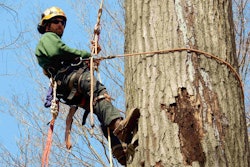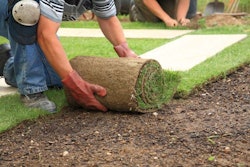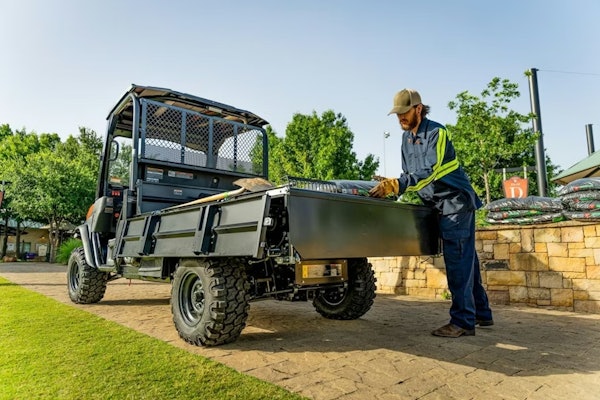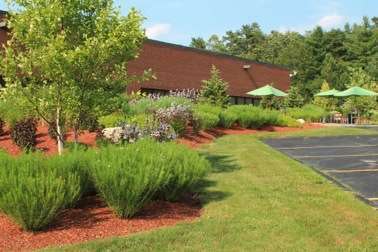 Photo: The Garden Imprint
Photo: The Garden ImprintBy Carol Robertson
Research has shown that contact with nature can have a real impact on office workers, students and hospital patients. A study published by the environmental consulting firm Terrapin Bright Green describes distinct, measurable biological benefits of a connection to nature in our workplace settings. Scientists have found that factors as simple as having a view through a window to a natural area, access to an outdoor meeting space, or the addition of indoor plants or water features correspond to lower blood pressure, increased alertness, better concentration, longer attention spans and more feelings of well-being.
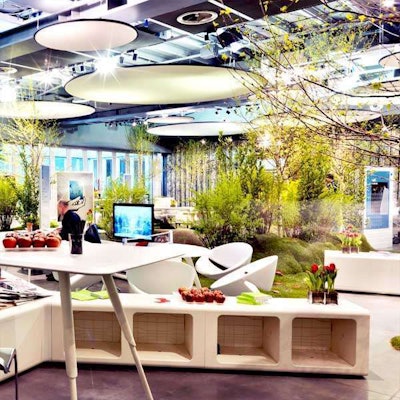 ThinkGarden. Photo: Radim Tkadlec, architect, with Pierandrei Associati.
ThinkGarden. Photo: Radim Tkadlec, architect, with Pierandrei Associati.These positive impacts translate into higher productivity, lower absenteeism and greater sense of belonging. In fact many world-class architects are now designing corporate buildings that make use of these findings by creating views of surrounding natural areas or incorporating interior green spaces into their designs. Europeans often seem to set the pace in new design. The Thinkgarden in Milan, Italy, has been called “one of the world’s coolest offices.” It brings plants and other natural motifs inside the office space to promote creativity and relaxation.
These findings that connect health and wellbeing with nature will come as no surprise to landscapers. Many of us became landscapers because we feel better working out-of-doors. We are already aware that our sense of wellbeing and productivity improve when we are in or near natural surroundings. So how can we take advantage of this research and use it to improve our landscapes and our bottom line?
When we at Garden Imprint set out to re-design the Brookwood Business Center in northeastern Massachusetts, we kept the businesses and their employees in mind. We wanted to improve the experience of the many workers who walked through the industrial park at lunch by including trees and shrubs that created a more natural appearance. We built new common areas at the entries of two adjoining buildings and installed mixed planting areas with seating for outdoor meetings and work breaks.
We planted these new landscapes with trees, shrubs and perennials that provide lots of seasonal changes. Along with that, we re-purposed large boulders and topsoil from the existing planting beds to re-sculpt them into high and low vistas, which research has shown to be more desirable than viewing flat areas.
Our design includes a 7,000-square-foot area to be established as a wildflower meadow, eliminating lawn and reducing maintenance inputs, while providing for changing seasonal color and a desirable view of the movement of birds and bees near the adjoining wetland. These changes allowed us to have the site certified by the National Wildlife Federation as a wildlife habitat.
These are not large departures from the rules of landscape design, but they do reflect a change in focus away from a landscape that simply looks neat to passersby and toward a landscape that is a functioning part of the workspace.
Last fall I visited the patio we had designed on the site. The tall grasses were golden in the late autumn sun and rustled in the breeze. Although it was a chilly day, two businessmen had stepped outside to talk on the patio. When I introduced myself, one of them, the president of a company that had just moved into the building, remarked enthusiastically about the landscaping and asked me for tips on adding plants to his lobby. Like most people, he responded intuitively to the natural setting. Another nice bonus: he became a client.
Here are some simple changes that landscapers can provide which could have a meaningful impact on worker productivity and wellbeing, while translating into cost savings for our commercial real estate clients.
- Design plantings to be viewed from interior windows and entryways to increase their productivity value.
- Move plantings away from building foundations for better visibility from inside.
- Research found that change is an important aspect of nature. The inclusion of masses of taller grasses or trees that sway and rustle in the breeze is an important feature of the landscape.
- Include plants that attract wildlife, especially natives to your region, which provide additional interest and increase their landscape value.
- Minimize shearing. Although a well-groomed Yew hedge can be a beautiful accent, humans respond positively to natural shapes. Shearing reduces plant movement, discourages wildlife and often removes flower buds.
- Add a walking path or outdoor seating area, or the suggestion of one. The serenity of an outdoor bench can provide visual benefits even if no one actually sits on it.
- Take advantage of any water views, water features or other water on site. Even a vernal pool can be kept tidy enough to be highlighted as a landscape asset. We pay a premium for water views from our homes; any addition of water features on our worksites should carry a similar premium.
- Don’t ignore the perimeter. Many sites have lovely tree stands or rock outcroppings that lie outside the cut line of the lawn. Integrate these assets into the view wherever possible.
The value of our office and industrial parks as landscapes can be overlooked because owners and property managers look at our services as a necessary maintenance expense, not a value-added proposition. We have been successful in helping our residential clients see their outdoor spaces as places to live and enjoy. It is time for us landscapers to change our commercial sites by shifting the focus from maintaining the property to maintaining the health and well-being of the people who spend their days on those sites.



